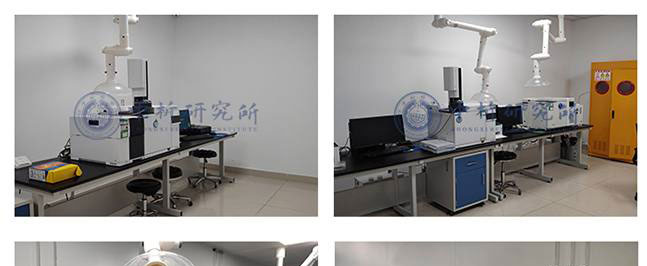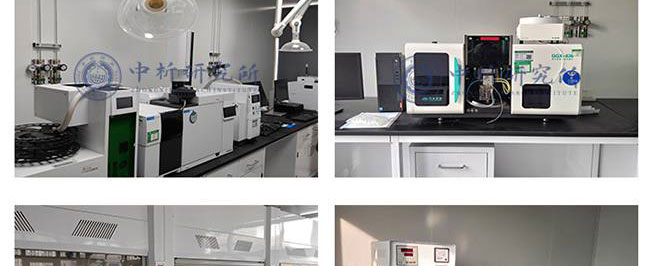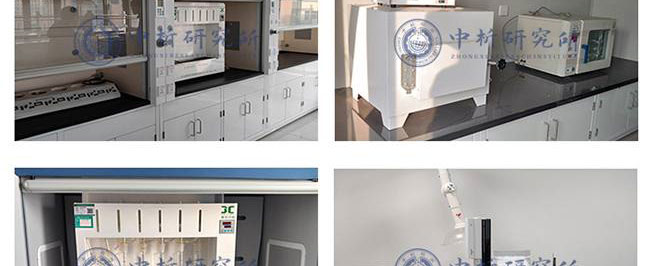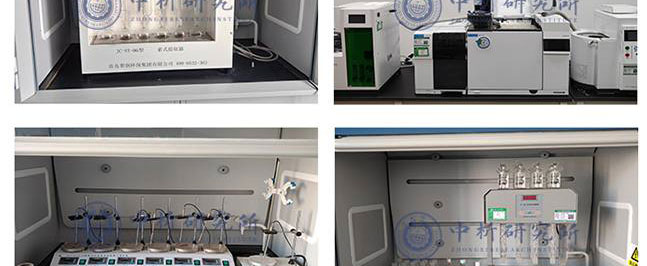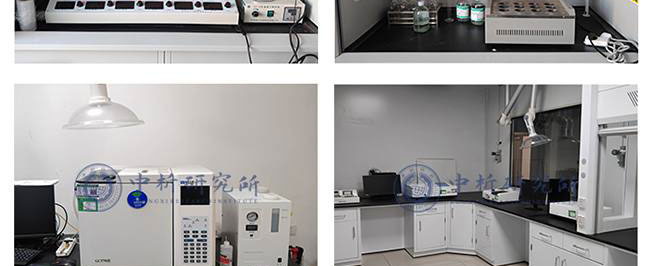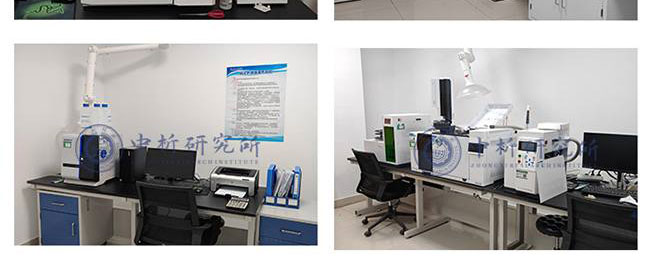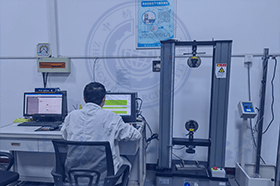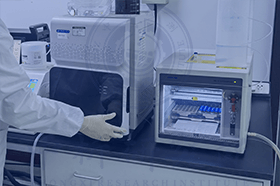国家标准 GB/T 23483-2009 建筑物围护结构传热系数及采暖供热量检测方法
【适用范围】本标准规定了建筑物围护结构传热系数及采暖供热量的术语和定义、检测条件、检测装置、检测方法、数据处理和检测报告。rn本标准适用于建筑物围护结构主体部位传热系数及采暖供热量的检测。
【中国标准分类】 Q70 建筑构配件与设备
【国际标准分类】 91.060.01-建筑构件综合
国家标准 GB/T 29468-2012 洁净室及相关受控环境 围护结构夹芯板应用技术指南
【适用范围】本标准规定了洁净室及相关受控环境围护结构中应用的墙板、吊顶板等夹芯板的产品规格、原材料和技术性能要求、性能检测方法、检验规则及安装中的注意事项等。本标准适用洁净室及相关受控环境应用的围护结构中的墙板和吊顶板等夹芯板。
【中国标准分类】 C70 劳动安全技术
【国际标准分类】 13.040.30-工作场所空气
国家标准 GB/T 30103.3-2013 冷库热工性能试验方法 第3部分:围护结构热流量检测
【适用范围】GB/T 30103的本部分规定了土建冷库及装配式冷库保温性能中围护结构热流量和传热系数的检测方法。本部分适用于各种类型新旧冷库冷间隔热性能和对能耗影响的计算。
【中国标准分类】 J73 通用机械与设备
【国际标准分类】 97.130.20-商用制冷设备
国家标准 GB/T 30592-2014 透光围护结构太阳得热系数检测方法
【适用范围】本标准规定了透光围护结构太阳得热系数检测中的术语和定义、检测方法、数据处理以及检测 n报告。 n本标准适用于采用人工模拟光源对透光围护结构太阳得热系数的检测。 n注:如采用自然光源对透光围护结构太阳得热系数进行检测
其检测装置可参照附录 A。
【中国标准分类】 P31 工业与民用建筑工程
【国际标准分类】 91.040.01-建筑物综合
国家标准 GB/T 34342-2017 围护结构传热系数检测方法
【适用范围】本标准规定了建筑物的围护结构传热系数检测方法的术语和定义、检测原理、检测条件、检测步骤、数据处理、检测报告。
本标准适用于建筑物的均质构造和非均质构造围护结构传热系数现场检测。不适用于透光围护结构传热系数检测。
【中国标准分类】 P32 工业与民用建筑工程
【国际标准分类】 91.060.10-墙、隔墙、房屋正面
国家标准 GB/T 34606-2017 建筑围护结构整体节能性能评价方法
【适用范围】本标准规定了建筑围护结构整体节能性能评价方法的术语和定义、要求、整体评价与等级划分、单项节能性能评价以及评价报告。
本标准适用于民用建筑的围护结构整体节能性能评价。
本标准不适用于透光玻璃幕墙建筑和大空间建筑。
【中国标准分类】 P31 工业与民用建筑工程
【国际标准分类】 91.060.01-建筑构件综合
国家标准 GB/T 36372-2018 洁净室及相关受控环境组合式围护结构通用技术要求
【适用范围】本标准规定了洁净室及相关受控环境组合式围护结构的技术要求和检测方法。
本标准适用于洁净室及相关受控环境内不高于4m的组合式围护结构。
【中国标准分类】 P31 劳动安全技术
【国际标准分类】 91.120.99-有关建筑物防护的其他标准
地方标准 DB37/T 724-2007 建筑节能检测技术规范 第2部分: 围护结构现场实体检测部分
【适用范围】山东省地方标准;
【中国标准分类】 P31 工业与民用建筑工程
【国际标准分类】 91.120.99-有关建筑物防护的其他标准
地方标准 DB37/T 5015-2014 民用建筑围护结构传热系数检测标准(热箱法)
【适用范围】青海省地方标准;------本标准适用于青海地区采暖期和非采暖期建筑物围护结构传热系数的测定。
【中国标准分类】 P46 供热、供气、空调及制冷工程
【国际标准分类】 91.140.01-建筑物中的设施综合
地方标准 DB64/T 244-2001 建筑物围护结构传热系数现场检测标准(热箱法)
【适用范围】宁夏回族自治区地方标准;
【中国标准分类】 Z06 环境保护综合
【国际标准分类】 13.020.01-环境和环境保护综合
地方标准 DG/TJ 08-2038-2008 建筑围护结构节能现场检测技术规程(附条文说明)
【适用范围】
【中国标准分类】 P20 工程结构
【国际标准分类】 91.080.01-建筑结构综合
地方标准 DG/TJ 08-206-2002 住宅建筑围护结构节能应用技术规程(附条文说明)
【适用范围】
【中国标准分类】 P33 工业与民用建筑工程
【国际标准分类】 91.040.30-住宅建筑物
国际标准 ISO 21105-1-2019 建筑物的性能--建筑物围护结构的热性能验证和调试--第1部分:一般要求
【适用范围】This document describes a building enclosure commissioning process to achieve a well performing
durable and maintainable building enclosure. This document includes procedures
methods and
documentation requirements describing the application of the commissioning process to a building
enclosure at each phase of a project. These project phases span from predesign through owner
occupancy and operation. This process is referred to throughout this document as building enclosure
commissioning (BECx).
This document applies to new building construction and building re-commissioning. This document is
for use by an owner
commissioning provider
building developer
owner’s representative
construction
manager
architect
contractor
and/or consultant
etc. Its purpose is to determine and complete the
required tasks and activities to deliver a building enclosure which meets the performance requirements
of the owner. Requirements for the project are established by the owner and/or commissioning
provider (CxP).
This document identifies steps necessary to perform a building enclosure risk analysis. The analysis
will result in tasks that define the level of BECx
commensurate with the owner’s tolerance for risk
associated with building enclosure performance.
The BECx process covered by this document is applicable to an individual assembly
a combination of
assemblies or a whole enclosure assembly. For example
an individual assembly can be the fenestration
the air barrier or the thermal insulation. A combination of assemblies would include the fenestration
the air barrier and the complete heat transfer system
(e.g. both the insulation and roof assembly).
A whole building enclosure assembly would include all heat
air and moisture control layers of the
building enclosure
on all six sides of the building.
This document describes requirements for any third-party consultants and/or building enclosure
commissioning providers (BECxP) to document their technical qualifications
independence and
knowledge of the BECx process
including their education
training
and experience.
【中国标准分类】 Q13 建材产品
【国际标准分类】 91.120.10-绝热
国外标准 ASTM E1700-2016 办公设备在结构和建筑围护结构上适用性分类
【适用范围】1.1 This classification covers matched sets of scales (see Figs. 1-24) for classifying an aspect of the serviceability of an office facility
that is
the capability of an office facility to meet certain possible requirements for structure and building envelope. 1.2 Within that aspect of serviceability
each matched set of scales (see Figs. 1-24) is for classifying one topic of serviceability. Each topic is typically broken down into two more demand functions and supply features. Each paragraph in an Occupant Requirement Scale summarizes one level of serviceability on that function
which occupants might require. The matching entry in the Facility Rating Scale is a translation of the requirement into a description of certain features of a facility which
taken in combination
indicate that the facility is likely to meet that level of required serviceability. 1.3 The entries in the Facility Rating Scale (see Figs. 1-24) are indicative and not comprehensive. They are for quick scanning
to estimate approximately
quickly
and economically
how well an office facility is likely to meet the needs of one or another type of occupant group
over time. The entries are not for measuring
knowing
or evaluating how an office facility is performing. 1.4 This classification can be used to estimate the level of serviceability of an existing facility. It can also be used to estimate the serviceability of a facility that has been planned but not yet built
such as one for which single-line drawings and outline specifications have been prepared. 1.5 This classification indicates what would cause a facility to be rated at a certain level of serviceability
but does not state how to conduct a serviceability rating nor how to assign a serviceability score. That information is found in Practice E1679. The scales in Figs. 1-24 are complimentary to and compatible with Practice E1679. Each requires the other. 1.6 The scales are intended to id
【中国标准分类】 Y54 文教、体育、娱乐用品
【国际标准分类】 35.260-办公机械
国外标准 ASTM E2947-2015 围护结构调试指南
【适用范围】1.1 Purpose—This guide provides procedures
methods and documentation techniques that may be used in the application of the building enclosure commissioning (BECx) process. This guide is complementary to Practice E2813 and is aligned with ANSI/ASHRAE/IES Standard 202 and ASHRAE Guideline 0. 1.2 Extent—The process outlined in this standard guide applies to each building delivery phase from pre-design through Owner occupancy and operation. The specific application of this guide may vary to suit the Owner
the project delivery method and the building project as outlined in the Owner‘s Project Requirements (OPR). 1.3 Primary Focus—The primary focus of this process includes
but may not be limited to
new construction of building enclosures
existing building enclosures undergoing substantial renovation or alteration
and continuous commissioning of enclosure systems. 1.4 Contractual and Regulatory Obligations—The methods described in this guide are not intended to supersede or otherwise replace the contractual obligations reserved specifically for the parties responsible for the design and construction of a building or structure
nor to alter the roles
responsibilities and duties that may otherwise be assigned to those parties by applicable regulatory or statutory law. 1.5 This standard does not purport to address all of the safety concerns
if any
associated with its use. It is the responsibility of the user of this standard to establish appropriate safety and health practices and determine the applicability of regulatory limitations prior to use.
【中国标准分类】 Q04 建材综合
【国际标准分类】 91.040.01-建筑物综合
国外标准 ASTM E2947-2014 围护结构调试指南
【适用范围】1.1 Purpose—This guide provides procedures
methods and documentation techniques that may be used in the application of the building enclosure commissioning (BECx) process. This guide is complementary to Practice E2813 and is aligned with ANSI/ASHRAE/IES Standard 202 and ASHRAE Guideline 0. 1.2 Extent—The process outlined in this standard guide applies to each building delivery phase from pre-design through Owner occupancy and operation. The specific application of this guide may vary to suit the Owner
the project delivery method and the building project as outlined in the Owner‘s Project Requirements (OPR). 1.3 Primary Focus—The primary focus of this process includes
but may not be limited to
new construction of building enclosures
existing building enclosures undergoing substantial renovation or alteration
and continuous commissioning of enclosure systems. 1.4 Contractual and Regulatory Obligations—The methods described in this guide are not intended to supersede or otherwise replace the contractual obligations reserved specifically for the parties responsible for the design and construction of a building or structure
nor to alter the roles
responsibilities and duties that may otherwise be assigned to those parties by applicable regulatory or statutory law. 1.5 This standard does not purport to address all of the safety concerns
if any
associated with its use. It is the responsibility of the user of this standard to establish appropriate safety and health practices and determine the applicability of regulatory limitations prior to use.
【中国标准分类】 Q04 建材综合
【国际标准分类】 91.040.01-建筑物综合
国外标准 ASTM E3054/E3054M-2016 建筑围护结构湿度控制设计用湿热模型的鉴定与使用指南
【适用范围】1.1 This guide offers guidance for the characterization and use of hygrothermal models for moisture control design of building envelopes. In this context
“hygrothermal models” refers to the application of a mathematical model to the solution of a specific heat and moisture flow performance issue or problem. Hygrothermal models are used to predict and evaluate design considerations for the short-term and long-term thermal and moisture performance of building envelopes. 1.2 Each hygrothermal model has specific capabilities and limitations. Determining the most appropriate hygrothermal model for a particular application requires a thorough analysis of the problem at hand
understanding the required transport processes involved
and available resources to conduct the analysis. Users of this guide can describe the functionality of the hygrothermal model used in an analysis in a consistent manner. 1.3 This guide applies to hygrothermal models that range from complex research tools to simple design tools. This guide provides a protocol for matching the analysis needs and the capabilities of candidate models. 1.4 This guide applies to the use of models that include all or part of the following thermal and moisture storage and transport phenomena: (1) heat storage of dry and wet building materials
(2) heat transport by moisture-dependant thermal conduction
(3) phase change phenomena (for example
evaporation and condensation)
(4) heat transport by air convection
(5) moisture retention by vapor adsorption and capillary forces
(6) moisture transport by vapor diffusion (molecular and effusion)
(7) moisture transport by liquid transport (surface diffusion and capillary flow)
and (8) moisture (vapor) transport by air convection. 1.5 This guide does not apply to cases requiring analysis of the following: (1) convection that occurs in a three-dimensional manner or through holes and cracks; (2) hydraulic
osmotic
or elect
【中国标准分类】 P31 工业与民用建筑工程
【国际标准分类】 91.120-建筑物的防护
国外标准 ASTM C1848-2017 建筑围护结构用高压喷涂聚氨酯泡沫绝缘材料安装规程
【适用范围】1.1 This practice covers the installation of high-pressure spray polyurethane foam (SPF) as an insulation for building enclosure assemblies including: walls
ceilings
attics
floors
and crawl spaces. This practice does not apply to SPF used strictly as a component for an air barrier system or for SPF used in roofing applications. 1.2 Building design criteria and selection of SPF are beyond the scope of this practice. 1.3 The use of SPF insulation covered by this practice is typically regulated by building codes or other agencies that address fire performance. Where required the fire performance of the material shall be addressed through standard fire test methods established by the appropriate governing documents. 1.4 The values stated in SI units are to be regarded as the standard. The values given in parentheses are for information only. 1.5 This standard does not purport to address all of the safety concerns
if any
associated with its use. It is the responsibility of the user of this standard to establish appropriate safety and health practices and determine the applicability of regulatory limitations prior to use.
【中国标准分类】 Q25 建材产品
【国际标准分类】 91.100.10-水泥、石膏、石灰、砂浆
国外标准 ASTM C1848-2017a 建筑围护结构用高压喷涂聚氨酯泡沫绝缘材料安装规程
【适用范围】
【中国标准分类】 Q25 建材产品
【国际标准分类】 91.100.10-水泥、石膏、石灰、砂浆
国外标准 ASTM E2947-2016 围护结构调试指南
【适用范围】1.1 Purpose—This guide provides procedures
methods and documentation techniques that may be used in the application of the building enclosure commissioning (BECx) process. This guide is complementary to Practice E2813 and is aligned with ANSI/ASHRAE/IES Standard 202 and ASHRAE Guideline 0. 1.2 Extent—The process outlined in this standard guide applies to each building delivery phase from pre-design through Owner occupancy and operation. The specific application of this guide may vary to suit the Owner
the project delivery method and the building project as outlined in the Owner‘s Project Requirements (OPR). 1.3 Primary Focus—The primary focus of this process includes
but may not be limited to
new construction of building enclosures
existing building enclosures undergoing substantial renovation or alteration
and continuous commissioning of enclosure systems. 1.4 Contractual and Regulatory Obligations—The methods described in this guide are not intended to supersede or otherwise replace the contractual obligations reserved specifically for the parties responsible for the design and construction of a building or structure
nor to alter the roles
responsibilities and duties that may otherwise be assigned to those parties by applicable regulatory or statutory law. 1.5 This standard does not purport to address all of the safety concerns
if any
associated with its use. It is the responsibility of the user of this standard to establish appropriate safety and health practices and determine the applicability of regulatory limitations prior to use.
【中国标准分类】 Q04 建材综合
【国际标准分类】 91.040.01-建筑物综合
国外标准 ASTM E2947-2016a 围护结构调试指南
【适用范围】1.1 Purpose—This guide provides procedures
methods and documentation techniques that may be used in the application of the building enclosure commissioning (BECx) process. This guide is complementary to Practice E2813 and is aligned with ANSI/ASHRAE/IES Standard 202 and ASHRAE Guideline 0. 1.2 Extent—The process outlined in this standard guide applies to each building delivery phase from pre-design through Owner occupancy and operation. The specific application of this guide may vary to suit the Owner
the project delivery method and the building project as outlined in the Owner‘s Project Requirements (OPR). 1.3 Primary Focus—The primary focus of this process includes
but may not be limited to
new construction of building enclosures
existing building enclosures undergoing substantial renovation or alteration
and continuous commissioning of enclosure systems. 1.4 Contractual and Regulatory Obligations—The methods described in this guide are not intended to supersede or otherwise replace the contractual obligations reserved specifically for the parties responsible for the design and construction of a building or structure
nor to alter the roles
responsibilities and duties that may otherwise be assigned to those parties by applicable regulatory or statutory law. 1.5 This standard does not purport to address all of the safety concerns
if any
associated with its use. It is the responsibility of the user of this standard to establish appropriate safety and health practices and determine the applicability of regulatory limitations prior to use.
【中国标准分类】 Q04 建材综合
【国际标准分类】 91.040.01-建筑物综合
国外标准 BS 4904-1978 建筑用外部围护结构颜色规范
【适用范围】Text
mask and folder specifying 38 preferred colours for external cladding in aluminium
asbestos-cement
opaque glass
opaque plastics and steel
selected from BS 5252. The specified colours are not illustrated; these are shown in BS 5252.
【中国标准分类】 P32 工业与民用建筑工程
【国际标准分类】 91.060.10-墙、隔墙、房屋正面
国外标准 ANSI/ASTM E1700-1995 办公设施关于结构和建筑物围护结构适用性的分类
【适用范围】This classification covers pairs of scales (see ) for classifying an aspect of the serviceability of an office facility
that is
the capability of an office facility to meet certain possible requirements for structure and building envelope. Within that aspect of serviceability
each pair of scales (see ) are for classifying one topic of serviceability. Each paragraph in an Occupant Requirement Scale summarizes one level of serviceability on that topic
which occupants might require. The matching entry in the Facility Rating Scale is a translation of the requirement into a description of certain features of a facility which
taken in combination
indicate that the facility is likely to meet that level of required serviceability. The entries in the Facility Rating Scale (see ) are indicative and not comprehensive. They are for quick scanning
to estimate approximately
quickly
and economically
how well an office facility is likely to meet the needs of one or another type of occupant group
over time. The entries are not for measuring
knowing
or evaluating how an office facility is performing. This classification can be used to estimate the level of serviceability of an existing facility. It can also be used to estimate the serviceability of a facility that has been planned but not yet built
such as one for which single-line drawings and outline specifications have been prepared. This classification indicates what would cause a facility to be rated at a certain level of serviceability
but does not state how to conduct a serviceability rating nor how to assign a serviceability score. That information is found in Practice E 1334. The scales in are complimentary to and compatible with Practice E 1334. Each requires the other.
【中国标准分类】 Y50 文教、体育、娱乐用品
【国际标准分类】 35.260-办公机械
国家标准 GB/T 4438-1984 铝及铝合金波纹板
【适用范围】本标准适用于做工程围护结构材料的铝及铝合金波纹板。
【中国标准分类】 H61 有色金属及其合金产品
【国际标准分类】 77.120.10-铝和铝合金
国家标准 GB/T 6891-2018 铝及铝合金压型板
【适用范围】本标准规定了铝及铝合金压型板的要求、试验方法、检验规则和标志、包装、运输、贮存及质量证明书与订货单(或合同)内容。
本标准适用于工业及民用建筑、建筑围护结构、汽车厢体用铝及铝合金压型板(以下简称压型板)。
【中国标准分类】 H61 有色金属及其合金产品
【国际标准分类】 77.150.10-铝产品
国家标准 GB/T 9158-1988 建筑用窗承机械力的检测方法
【适用范围】 本标准规定了建筑用窗承受机械力的检测方法。 本标准适用于任何材料制作的窗。检测对象只限于窗试件本身,不涉及窗和围护结构间的结合部位.
【中国标准分类】 Q73 建筑构配件与设备
【国际标准分类】 91.060.50-门窗
国家标准 GB/T 11835-2016 绝热用岩棉、矿渣棉及其制品
【适用范围】本标准规定了绝热用岩棉、矿渣棉及其制品的术语和定义、分类和标记、要求、试验方法、检验规则、标志、包装、运输及贮存。n本标准适用于设备及管道上使用的岩棉、矿渣棉及其制品。n本标准不适用于在建筑物围护结构、建筑构件和地板中使用的岩棉、矿渣棉及其制品。
【中国标准分类】 Q25 建材产品
【国际标准分类】 91.120.10-绝热
国家标准 GB/T 17795-2019 建筑绝热用玻璃棉制品
【适用范围】本标准规定了建筑绝热用玻璃棉制品的分类和标记、技术要求、试验方法、检验规则以及标志、包装、运输和贮存。
本标准适用于建筑围护结构绝热和通风管道用玻璃棉制品。
【中国标准分类】 Q25 建材产品
【国际标准分类】 91.120.10-绝热
国家标准 GB/T 19686-2015 建筑用岩棉绝热制品
【适用范围】本标准规定了建筑领域用岩棉绝热制品(以下简称岩棉制品)的适用范围、分类和标记、要求、试验方法、检验规则、标志、包装、运输及贮存n本标准适用于在建筑物围护结构上使用的岩棉制品,也适用于在具有保温功能的建筑构件和地板使用的岩棉制品。rn本标准不适用于外墙外保温薄抹灰系统使用的岩棉制品。
【中国标准分类】 Q25 建材产品
【国际标准分类】 91.120.10-绝热
国家标准 GB/T 19686-2005 建筑用岩棉、矿渣棉绝热制品
【适用范围】 本标准规定了建筑用岩棉、矿渣棉绝热制品(以下简称制品)的分类、标记、要求、试验方法、检验规则、标志、包装、运输及贮存。rn 本标准适用于在建筑物围护结构上使用的岩棉、矿渣棉制品,也适用于在具有保温功能的建筑构件和地板使用的岩棉、矿渣棉制品。
【中国标准分类】 Q25 建材产品
【国际标准分类】 91.120.10-绝热
国家标准 GB/T 24763-2009 泡沫混凝土砌块用钢渣
【适用范围】 本标准规定了泡沫混凝土砌块用钢渣的术语和定义、规格、技术要求、试验方法、验收规则、包装、标志、储存、运输和质量证明书。本标准适用于建筑围护结构泡沫混凝土砌块用钢渣粉、钢渣砂。
【中国标准分类】 H54 钢铁产品
【国际标准分类】 77.140.99-其他钢铁产品
国家标准 GB/T 26538-2011 烧结保温砖和保温砌块
【适用范围】 本标准规定了烧结保温砖和保温砌块的术语和定义、产品分类、技术要求、试验方法、检验规则、标志、包装、运输和贮存。本标准适用于以粘土、页岩或煤矸石、粉煤灰、淤泥等固体废弃物为主要原料制成的,或加人成孔材料制成的实心或多孔薄壁经焙烧而成,主要用于建筑物围护结构的保温隔热的砖和砌块。
【中国标准分类】 Q15 建材产品
【国际标准分类】 91.100.10-水泥、石膏、石灰、砂浆
国家标准 GB/T 29043-2012 建筑幕墙保温性能分级及检测方法
【适用范围】本标准规定了建筑幕墙保温性能术语和定义、分级、检侧方法及检测报告。本标准适用于构件式幕墙和单元式幕墙传热系数以及抗结露因子的分级及检测
其他形式幕墙和有保温要求的透光围护结构可参照执行。
【中国标准分类】 Q04 建材综合
【国际标准分类】 91.040-建筑物
国家标准 GB/T 29183-2012 红外热像法检测 建设工程现场通用技术要求
【适用范围】本标准规定了红外热像法在建设工程现场检测的技术要求。本标准适用于红外热像法现场检测建筑外墙湿作业饰面材料粘贴质量、建筑外围护结构热工缺陷、屋顶渗漏、建筑外围护气密性、港工大体积混凝土表层缺陷、工业装置衬里损伤、工业装置保温效果确认、公路沥青路面铺装质量等建设工程施工质量。
【中国标准分类】 A56 计量
【国际标准分类】 17.220-电学、磁学、电和磁的测量
国家标准 GB/T 29737-2013 建筑门窗防沙尘性能分级及检测方法
【适用范围】本标准规定了建筑门窗防沙性能和防尘性能的术语和定义、分级、检测装置、检测准备、检测步骤、结果评定及检测报告。rn本标准适用于建筑外门窗防沙尘性能的分级及实验室检测。检测对象只限于外门窗试件本身
不涉及外门窗与围护结构之间的连接部位。rn
【中国标准分类】 P32 工业与民用建筑工程
【国际标准分类】 91.060.50-门窗
国家标准 GB/T 31345-2014 节能量测量和验证技术要求 居住建筑供暖项目
【适用范围】本标准规定了居住建筑供暖节能改造项目节能量测量和验证的项目边界划分和能耗统计范围、基本要求、测量和验证方法。rn本标准适用于居住建筑集中供暖系统及相关建筑围护结构节能技术改造项目节能量的测量和验证。
【中国标准分类】 F01 能源、核技术综合
【国际标准分类】 27.010-能源和热传导工程综合
国家标准 GB/T 32163.4-2015 生态设计产品评价规范 第4部分:无机轻质板材
【适用范围】GB/T32163的本部分规定了无机轻质板材生态设计评价的术语和定义、评价要求、产品生命周期评价报告编制方法和评价方法。 n本部分适用于围护结构用板材、建筑保温用板材、建筑装饰用板材等非烧结类无机轻质板材的生命周期生态设计评价,其他类型的板材也可参考此规范。
【中国标准分类】 Z04 环境保护综合
【国际标准分类】 13.020.20-环境经济
国家标准 GB/T 33295-2016 墙体、阳台壁挂型家用太阳能热水系统技术要求
【适用范围】本标准规定了墙体、阳台壁挂型家用太阳能热水系统的定义、分类与标记、当量轮廓采光面积、设计要求、安装要求、技术要求、试验方法、文件编制、检验规则以及标志、包装、运输、贮存等技术要求。 本标准适用于贮热水箱容积不大于0.6m 3、太阳能集热器安装在建筑物墙面、阳台等外围护结构的家用太阳能热水系统。本标准不适用于闷晒式家用太阳能热水系统。
【中国标准分类】 F12 能源
【国际标准分类】 27.160-太阳能工程
国家标准 GB/T 37256-2018 建筑室外用格栅通用技术要求
【适用范围】本标准规定了建筑室外用格栅的术语和定义、分类和标记、材料、一般要求、要求和试验方法。
本标准适用于建筑外围护结构中的固定格栅。
【中国标准分类】 Q70 建筑构配件与设备
【国际标准分类】 91.060.99-建筑物的其他构件
国家标准 GB/T 38784-2020 悬空地板、踏步、步道及栈道玻璃
【适用范围】本标准规定了悬空地板、踏步、步道及栈道玻璃的术语和定义、产品分类、材料、要求、试验方法、检验规则及包装、标志、运输和贮存。
本标准适用于承载人员的悬空地板、踏步、步道及栈道用玻璃。
本标准不适用于围护结构的护板或顶棚等玻璃制品。
【中国标准分类】 Q33 陶瓷、玻璃
【国际标准分类】 81.040.20-建筑玻璃
国家标准 GB/T 39684-2020 外窗热工缺陷现场测试方法
【适用范围】本标准规定了外窗洞口区域的热工缺陷检测方法的检测、数据处理和结果判定以及检测报告等要求。
本标准适用于采用红外热像法对非透光建筑围护结构外窗洞口区域热工缺陷的检测。
【中国标准分类】 P32 工业与民用建筑工程
【国际标准分类】 91.040.01-建筑物综合
国家标准 GB/T 39969-2021 建筑用通风百叶窗通风及防雨性能检测方法
【适用范围】本标准规定了建筑用通风百叶窗通风及防雨性能检测方法的术语和定义、符号、检测原理、检测设备、试件、通风性能检测、静态防雨性能检测、动态防雨性能检测和检测报告。
本标准适用于建筑用通风百叶窗通风及防雨性能的实验室检测方法。检测对象只限于建筑用通风百叶窗试件本身,不涉及建筑用通风百叶窗与围护结构之间的连接部位。
【中国标准分类】 P32 工业与民用建筑工程
【国际标准分类】 91.060.50-门窗
国家标准 GB/T 50353-2013 建筑工程建筑面积计算规范
【适用范围】本规范适用于新建、扩建、改建的工业与民用建筑工程建设全过程的建筑面积计算。rn根据住房和城乡建设部《关于印发<2012年工程建设标准规范制订修订计划>的通知》(建标[2012]5号)的要求,规范编制组经广泛调查研究,认真总结经验,并在广泛征求意见的基础上,修订了本规范。rn本规范的主要技术内容包括:总则,术语,计算建筑面积的规定。rn本规范修订的主要技术内容包括:n1.增加了建筑物架空层的面积计算规定,取消了深基础架空层;n2.取消了有永久性顶盖的面积计算规定,增加了无围护结构有围护设施的面积计算规定;n3.修订了落地橱窗、门斗、挑廊、走廊、檐廊的面积计算规定;rn4.增加了凸(飘)窗的建筑面积计算要求;rn5.修订了围护结构不垂直于水平面而超出底板外沿的建筑物的面积计算规定;rn6.删除了原室外楼梯强调的有永久性顶盖的面积计算要求;rn7.修订了阳台的面积计算规定;n8.修订了外保温层的面积计算规定;n9.修订了设备层、管道层的面积计算规定;n10.增加了门廊的面积计算规定;n11.增加了有顶盖的采光井的面积计算规定。
【中国标准分类】 P04 工程建设综合
【国际标准分类】 91.010-建筑工业
国家标准 GB 50411-2019 建筑节能工程施工质量验收标准
【适用范围】本标准适用于新建、扩建和改建的民用建筑工程中围护 结构、供暖空调、配电照明、监测控制及可再生能源建筑节能工 程施工质量的验收。
【中国标准分类】 P32 工业与民用建筑工程
【国际标准分类】 91.010.01-建筑工业综合
4、双方将就检测项目进行详细沟通,并签署保密协议,以保证客户信息的保密性。在此基础上,我们将进行测试试验.














